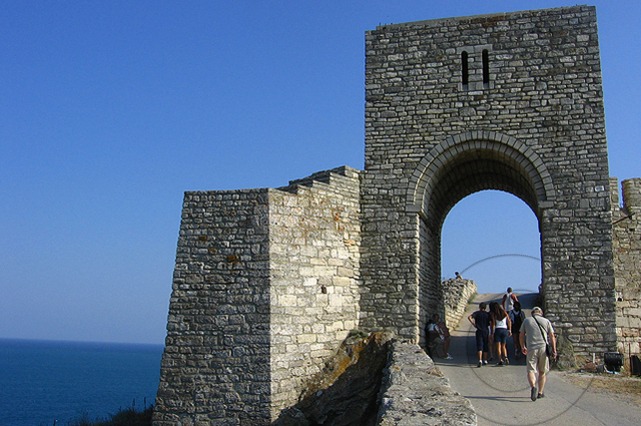The cape of Kaliakra is one of the most beautiful and romantic places in Bulgaria. Various legends have been told and wrap the story of the place in mystery. Cape Kaliakra attracts today’s nature lovers, those interested in bird watching, as well as people preferring ancient history.
Kaliakra is located 60 km southeast of Varna, close to the villages of Bulgarevo and St. Nikola. The cape extends two km into the sea and looks like a narrow peninsula. The narrow cliffs rise 70 m above the sea. A number of caves are located there. These can be accessed only via the sea.
The water carved into the cliffs openings and arches, which have been included in numerous legends.
Data shows that Kaliakra was populated as far back as the 4th century BC. The cape carried the name Tirizis, named after the Thracian tribe that lived there.
According to historical evidence, the place was under the rule of the Thracian leader Lizimah, considered to be one of the descendants of Alexander the Great. A legend describes how the ruler accumulated incredible wealth during marches in Persia. All of the treasures were hidden in Kaliakra’s caves.
During the German reign, the cape was enforced via fort walls. Romans later expanded the Thracian fortress. They formed an interior city, protected by a 10 m high and three m wide wall.
The 5th and 6th centuries AD saw the fortification as one of the main hindrances to the conquest of Barbarian tribes. The city itself turned into one of the most important regional settlements.
In these centuries the fortress carried the name Acre Castellum. The words respectively mean cape and fortress.
Until the 7th century AD, the fortress was developed, after which it came under neglect. The Bulgarian and Slavic tribes that moved to the area showed no interest in the place and it remained sparsely populated.
The name Kaliakra was mentioned for the first time in the 14th century. It was present in a map drafted by the Italian Petrus Vesconte. The origin is Greek, coming from the words beautiful and cape.
Another name was given by a German armor bearer who described the cape as Kalacerka. This name also has Greek origin and means beautiful rings in reference to the three circles of walls protecting the fortress.
Kaliakra saw most impressive progress in the 14th century, when it became part of the state of Karvun. Despite the centralized rule, the region came under the authority of two despots, Dobrotitsa and Balik. The first one named the region of Dobrudzha.
Evidence shows that Kaliakra was important settlement in the Middle Ages. Its rulers minted coins and were the first Bulgarians to start building a fleet. Part of the sewerage system of the city is still preserved, as well as remains of the rulers’ palace. In 1393 and 1394, the Carvun state came under Ottoman rule.
In 1444 the place was visited by the troops of the Polish and Hungarian king Vladislav Varnenchik.
Old Turkish documents mention the place as a harbor. In 1791, during the Russo-Turkish war Kaliakra witnesses one major battle. The squadron of Russian admiral Ushakov clashed with the much bigger man force of Hussein Pasha. The magnificent victory of the Russian marines is still celebrated and remembered today. A monument honors the courage of the Russian admiral.
Various legends have been told concerning Kaliakra. Two of them are considered most interesting. According to one, 40 Bulgarian girls tied their hairs together and jumped in the sea, in order to escape from the Ottoman rule. They turned into swans and returned to the shore many times.
The second legend tells how St. Nicolas tried to escape from Ottomans chasing him. He reached the seashore. Each time God created new land under his feet, giving him the chance to escape. Yet, the saint was caught.
Since 1941 Kaliakra has been named nature preserve and protected territory. A number of rare plant species can be found there. More than 40 types of endangered birds can be observed in the region.
By the 80s of the 20th century, the caves of Kaliakra have been the home of monk seals. Today visitors can spot dolphins.
Via Pontica, the migration flyway of more than 150 bird species gives visitors the chance to observe a unique and beautiful phenomenon. Some of the birds stop their flight in the Kaliakra region to get fed and to rest.
Two tourist pathways take the visitors to interesting spots on the cape. One leads to a two-storey restaurant hosted in one of the cape’s bigger caves. The second path takes visitors to the archaeological and historic museum. It has also been positioned inside a cave.
During August, the cape is lit by numerous colorful projectors creating an incredible sight.

